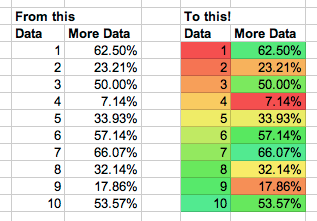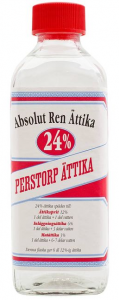I’ve been eyeing robot vacuums ever since the first Roomba came out, and when the nearby supermarket had a Roomba 521 on clearance, I splurged. Here’s the experiences this far.

Some background – we have a dog and two small kids in a 74.5 square meter flat. What this means is, the flat goes from neat to disaster area in about a quarter of an hour, sometimes faster. And that happens every day. Enter Roomba.
The kids and the dog took a few days to adjust to their new friend. Kerttu immediately named the robot wally (or wall-e) and talked to it the first couple days but then mostly lost interest. I think the dog still sometimes thinks the vacuum’s out to get her.
The algorithm the robot uses to navigate floors is interesting and watching wally do his job is strangely hypnotic. I’m noticing I’m starting to learn to predict where the robot will go next, even though I don’t know how the robot works. Subconscious pattern processing is pretty amazing, I guess.
I’m positively surprised at the efficiency of the robot. It’s not perfect and if I vacuumed by hand, the rooms would definitely be cleaner. On the other hand, I’m getting a 95% vacuumed flat with the touch of a button, which is completely awesome. I don’t think our floors have been this clean in a long time. To be fair, the real test for wally will be when Luna the dog starts dropping hair in a significant manner during the summer heat. If the results are as good then and the vacuum doesn’t choke, I’ll be pretty darn impressed.
It’s pretty clear that in order to get real value, you need to establish a routine for clearing the floors from toys & random junk every morning and turn on the robot for daily maintenance vacuuming. This seemed a bit of an effort the first few days but I’m getting hang of the routine and I’m feeling good about the results.
Two complaints this far.
First, the unit we got feels noisy. I know it’s silly to assume a vacuum would be silent, but the unit looks somewhat graceful so I somehow expected it to be quieter based on the looks. I’d definitely prefer to be out of home when wally is working, but I work from home right now, so that’s unfortunately not an option every day. It does sound like half the noise is the motors though, so I’m sure the unit could be made quieter.
Second, the dock supplied with the unit is just silly. The dock is super light weight and the bottom of it is slippery, so I can’t see how it’s supposed to really work. After wally failed to dock the 50th time due to the dock slipping away, I just put some two sided tape onto the bottom of the dock so it doesn’t move anymore, and the problem was solved. I suspect rubberised bottom with more friction would fix the problem, but Roomba decided to save costs and give me a cheap piece of slippery plastic instead.
And a couple improvements.
Firstly, I suspect the navigation system of the robots hasn’t improved hugely despite the product having been on market for a fairly long time. The robot definitely doesn’t remember the flat’s layout. Given today’s tech, I’d be very surprised if it wasn’t possible to create significantly better system that was still cheap enough to manufacture, so from this perspective it looks like Roomba is resting on their laurels, waiting for someone to come to market with a superior product and eat their lunch.
Second, it feels like the product would be greatly improved by adding some more personality traits to it. The couple little quirks the robot has are great – when you activate it from the dock, the robot makes the same warning beep sound as if it was a truck, as it backs out from the dock. And apparently you get some quirky talking when you try to steer the robot with your foot a little too much. But I’d like to hear the robot tell me about how full it is. Or maybe occasionally speak out how many meters it’s traveled in the flat. A bit of Genuine People Personalities and I think I’d love the bugger a bit more. And a talking piece of kit would probably make the product more viral. Having a switch to turn off the personality might be a good idea though, with related snarky comments when you turn it back on.
Anyway, summary. Yes, after two weeks of use, I’d say the €250 was well spent. Had I paid €500, I’m not sure if I’d be as happy. If you’re contemplating getting a robot vacuum, I suggest you only get one if you get a good deal and are willing to keep your floors clean. With those caveats, it can be a great investment. :)
Update: I’ve been informed the current models are incredibly good compared to the Roombas that first came to market. Myself assuming they’ve not improved dramatically is a testament to how good a job Roomba has done on the robots – the current model Just Works, so the user gets an impression that creating the product must have been effortless. The truth seems to be a massive amount of iteration has happened, even if the product still looks similar to the first models that came out.



 I’d been lazy and not dried my Rancilio Silvia espresso machine properly during a period of not using it for a while. To my horror, we found out some mould had developed inside the machine, which obviously made the coffee taste and smell pretty horrible. I did some frantic googling and found three suggestions to get rid of the mould:
I’d been lazy and not dried my Rancilio Silvia espresso machine properly during a period of not using it for a while. To my horror, we found out some mould had developed inside the machine, which obviously made the coffee taste and smell pretty horrible. I did some frantic googling and found three suggestions to get rid of the mould: Ocado had the pictured strong (24%!!) pickling vinegar available. The process I used that seems to have worked was:
Ocado had the pictured strong (24%!!) pickling vinegar available. The process I used that seems to have worked was: